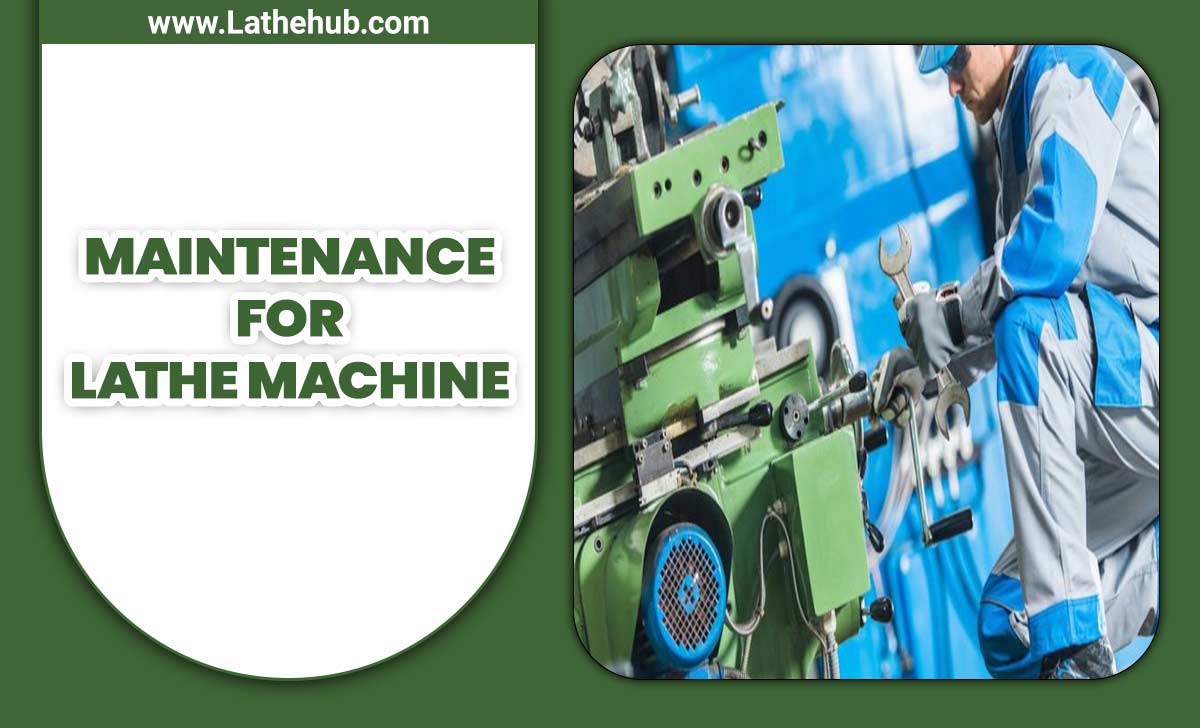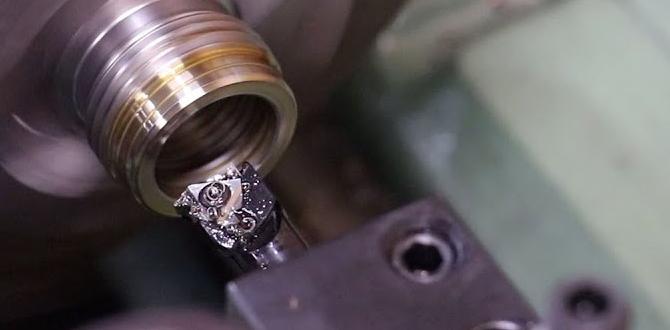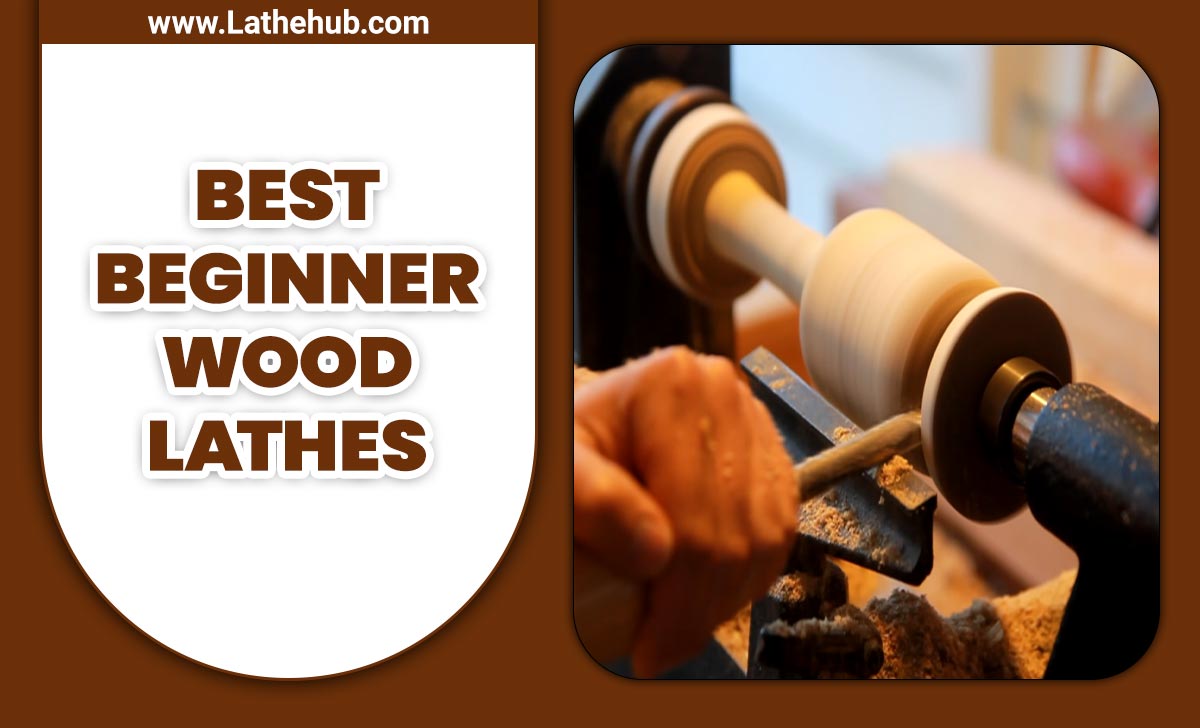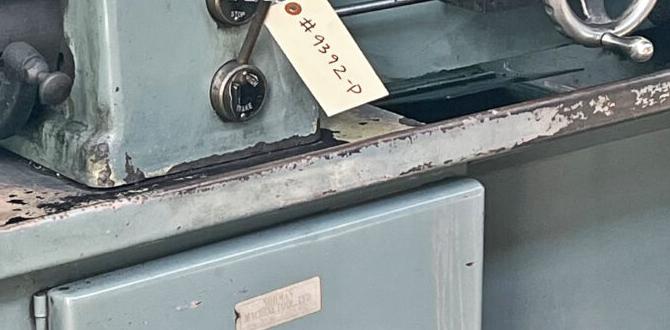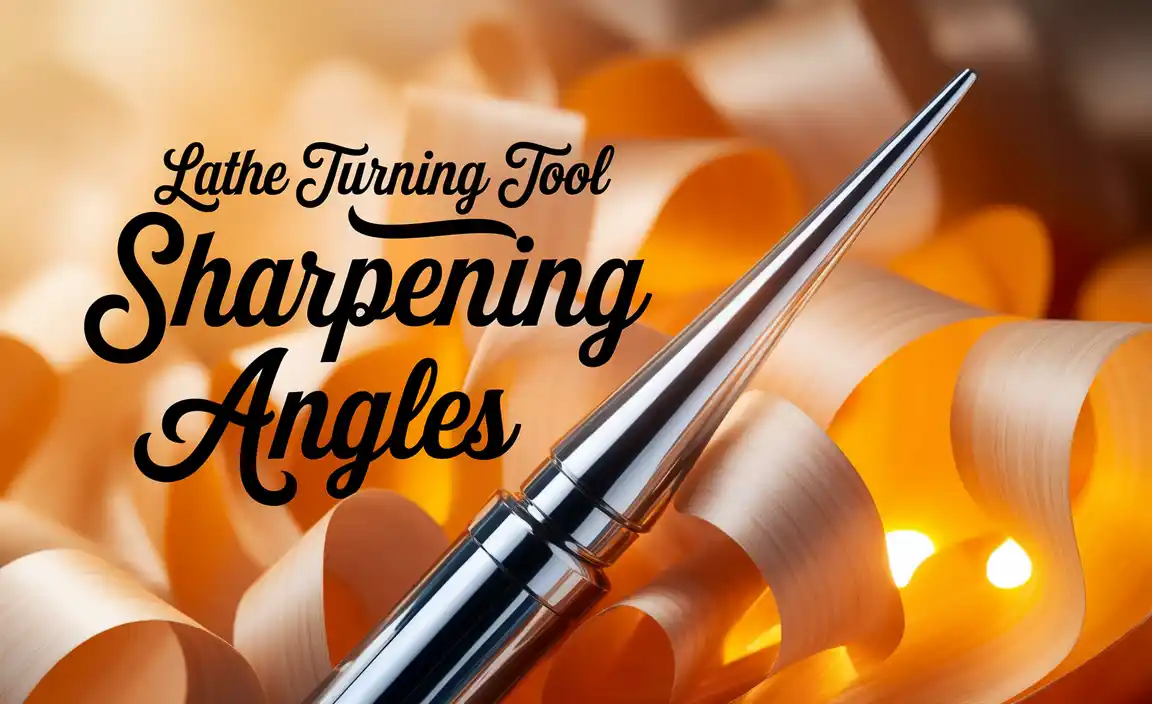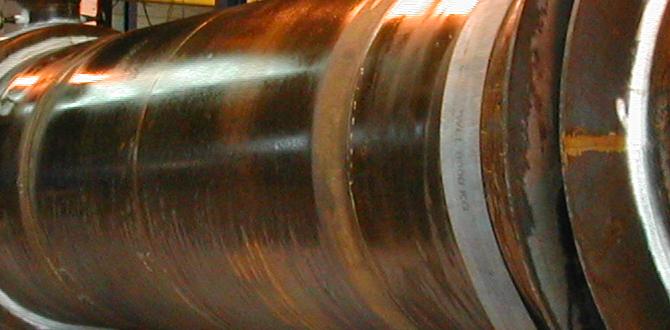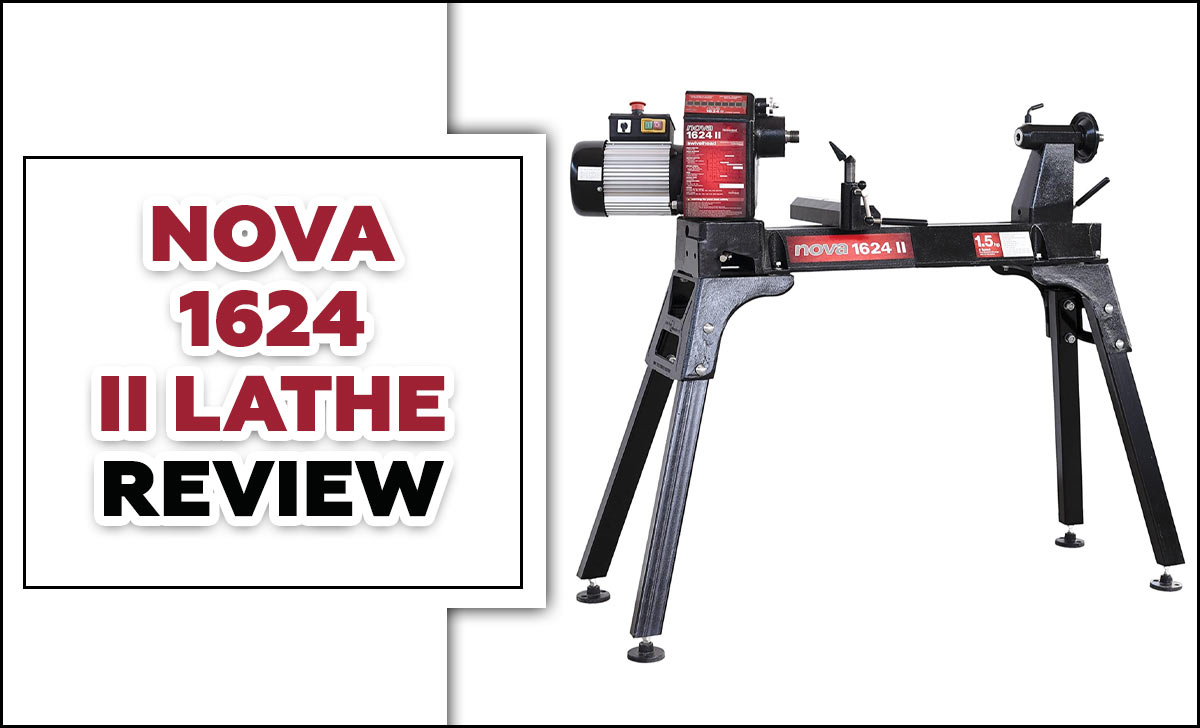Have you ever wondered how people turn ordinary pieces of wood or metal into beautiful shapes? Lathes play a crucial role in this process. These machines help in crafting and shaping materials in exciting ways. But did you know there are different types of lathes? Metal lathes and wood lathes serve unique purposes.
Imagine a sculptor carefully carving a statue. The sculptor uses tools to shape the material just right. Similarly, a metal lathe turns metal into precise shapes. On the other hand, a wood lathe spins wood, allowing for creativity in making furniture or decorative pieces.
In this article, we will explore the important differences between metal lathes and wood lathes. You will learn which lathe fits your needs best. Join us as we uncover tips and tricks in our lathe application guide. Whether you are a beginner or an experienced craftsman, there’s something here for everyone!
Lathe Application Guide: Metal Lathe Vs Wood Lathe Explained In The World Of Machining And Woodworking, Lathes Play A Crucial Role In Shaping And Crafting Materials. Understanding The Differences Between Metal Lathes And Wood Lathes Is Essential For Selecting The Right Tool For Your Project. This Lathe Application Guide Will Delve Into The Distinct Features, Uses, And Advantages Of Metal Lathes Versus Wood Lathes, Ultimately Helping You Decide Which Is Best Suited For Your Needs. What Is A Lathe? A Lathe Is A Machine Tool That Rotates A Workpiece On Its Axis To Perform Various Operations Such As Shaping, Cutting, Drilling, Or Sanding. By Holding Material Stationary And Rotating It, Lathes Can Create Precise Shapes And Finish Surfaces Effectively. Metal Lathe **Overview** Metal Lathes Are Designed Primarily For Machining Metal Components. They Are Robust, Often Equipped With Powerful Motors And Heavier Frames To Handle The Strain Of Cutting Harder Materials. **Key Features** – **Material Capacity**: Metal Lathes Can Accommodate A Wide Range Of Metals, Including Aluminum, Brass, Steel, And More. – **Tooling**: They Typically Utilize High-Speed Steel Or Carbide Cutting Tools, Which Are Optimized For Metal Cutting. – **Precision**: Metal Lathes Usually Come With Intricate Controls For Precise Measurements, Making Them Ideal For Engineering And Manufacturing Tasks. **Applications** – Production Of Metal Parts And Machinery Components. – Fabrication And Repair Tasks In Various Industries, Including Automotive And Aerospace. – Creation Of Custom Tooling And Fixtures. Wood Lathe **Overview** Conversely, Wood Lathes Are Specifically Engineered For Woodworking. They Are Generally Lighter And Have A Simpler Design Compared To Metal Lathes, Focusing Primarily On Shaping Wood Rather Than Cutting Metal. **Key Features** – **Material Capacity**: Wood Lathes Handle Various Types Of Wood, Including Hardwood, Softwood, And Composites. – **Tooling**: They Typically Use Chisels, Gouges, And Scrapers Designed For Shaping And Finishing Wood. – **Ease Of Use**: Wood Lathes Are Often More User-Friendly, Making Them Ideal For Hobbyists And Beginners. **Applications** – Crafting Furniture And Decorative Wooden Items. – Producing Bowls, Spindles, And Other Turned Wood Products. – Woodworking Projects For Both Professional And Recreational Purposes. Comparing Metal Lathe And Wood Lathe | Feature | Metal Lathe | Wood Lathe | |———————–|———————————–|—————————–| | Material Compatibility | Metal | Wood | | Weight | Heavier And Sturdier | Lighter And Portable | | Tooling | High-Speed Steel Or Carbide Tools | Chisels And Gouges | | Precision Control | High Precision For Detailed Work | Less Precision But Easier To Control | | Ideal Users | Professionals And Engineers | Hobbyists And Woodworkers | Conclusion Choosing Between A Metal Lathe And A Wood Lathe Depends Largely On The Types Of Projects You Plan To Undertake. If You’Re Working With Metals And Require High Precision, A Metal Lathe Is The Way To Go. However, For Wood-Related Crafting, A Wood Lathe Will Serve Your Needs Better. Understanding The Unique Features And Applications Of Each Tool Is Essential For Any Serious Maker Or Craftsman, Ensuring That You Select The Right Lathe For Your Specific Requirements.
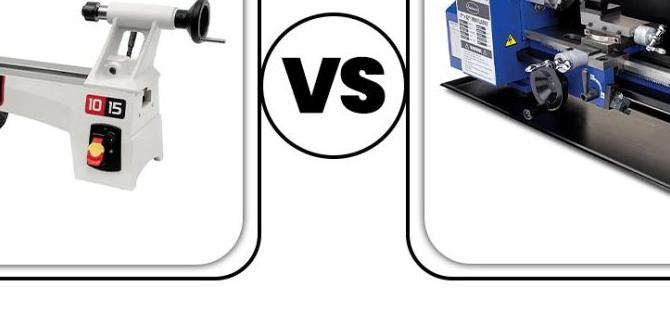
Lathe Application Guide: Metal Lathe vs Wood Lathe
When choosing between a metal lathe and a wood lathe, it helps to know their uses. Metal lathes shape hard materials like steel and aluminum. They perform precise cuts for machining tasks. By contrast, wood lathes focus on softer materials, making beautiful bowls and furniture. Did you know that ancient woodworkers used simple lathes to create intricate designs? Understanding the differences can guide you toward the right tool for your project. Which lathe suits your creative needs?Understanding Lathes
Definition and basic function of lathes. Brief history and evolution of lathes.Lathes are machines that shape materials like wood and metal. They rotate the material while a tool cuts into it. This process makes various items, from furniture legs to metal parts.
Historically, lathes date back to ancient Egypt, over 3,000 years ago. They have evolved greatly, with modern lathes now being computer-controlled.
- Definition: A lathe spins material for shaping.
- History: Lathes began over 3,000 years ago.
- Evolution: Modern lathes use computers for precision.
What are the main uses of lathes?
Lathes are used to make items like furniture, tools, and parts for machines.Metal Lathes
Key features and components of metal lathes. Common applications and industries that use metal lathes.Metal lathes are special machines that shape metal into useful parts. They have key features like a spindle that spins the metal and tools that cut and shape it. Common parts include the headstock, tailstock, and carriage. Metal lathes are widely used in industries like automotive, aerospace, and manufacturing. They help create items such as gears, rods, and engine parts. Without them, many machines would not work well!
What are the key features of metal lathes?
- Spindle: Holds and rotates the metal.
- Tool post: Keeps cutting tools in place.
- Carriage: Moves the tool along the metal.
- Tailstock: Supports long pieces of metal.
Where are metal lathes used?
Metal lathes are vital in many industries. They are often found in automotive, aerospace, and manufacturing. These machines help make items that are crucial for everyday life.
Wood Lathes
Key features and components of wood lathes. Common applications and industries that use wood lathes.Wood lathes are fantastic machines used to shape wood into amazing creations. These machines have key parts like the bed, headstock, tailstock, and tool rest. The bed holds everything steady, while the headstock powers the spinning. It’s like a dance floor for wood! Commonly, wood lathes are found in furniture making, cabinetry, and even toy crafting. They help artisans turn logs into stunning bowls, vases, or even elegant table legs. Who knew a piece of wood could become a masterpiece?
| Key Features | Applications |
|---|---|
| Powerful motor | Furniture making |
| Adjustable tool rest | Cabinetry |
| Stable bed design | Toy crafting |
Comparison of Metal and Wood Lathes
Key differences in functionality and design. Pros and cons of each type of lathe.Metal and wood lathes serve different purposes and have unique features. A metal lathe is built for heavy materials, while a wood lathe is designed for lighter wood projects. Here are some key differences:
- Functionality: Metal lathes shape hard materials. Wood lathes shape soft wood.
- Design: Metal lathes are sturdy and heavy. Wood lathes are lighter and more portable.
Each lathe has its pros and cons. Metal lathes offer precision, but they are costly and heavy. Wood lathes are affordable and easy to use but lack the same sturdiness. Picking the right one depends on your project needs.
What should I choose: Metal or Wood Lathe?
Choose a metal lathe for heavy work and precision. A wood lathe is best for lighter projects and beginners.
Choosing the Right Lathe for Your Needs
Factors to consider when selecting a lathe. Tips for beginners versus advanced users.When picking a lathe, think about what you will make. Different lathes work for different materials, like metal or wood. Here are some key factors to help you choose:
- **Material Type:** What will you turn? Metal lathes are great for metal, while wood lathes are perfect for wood.
- **Size:** Consider how much space you have. A bigger lathe takes more room.
- **Skill Level:** Beginners might need simpler machines. Advanced users can handle complex features.
- **Budget:** Decide how much money you want to spend.
As a beginner, start with a basic wood lathe. It is easier and safer. Experienced users can explore premium models with advanced options. Choose wisely to match your plans and skills.
What should beginners consider when choosing a lathe?
Beginners should pick a lathe that is easy to use and safe. Also, choose one suitable for wood or metal, depending on their projects.
What should advanced users look for in a lathe?
Advanced users often need lathes with more features and power. They look for models that can handle tough materials and complex designs.
Safety Practices When Using Lathes
Essential safety gear and precautions. Common accidents and how to prevent them.Using a lathe can be fun and useful, but safety is key. Always wear the right gear. This includes safety glasses, gloves, and a dust mask. These items help protect you from dust and flying debris. Here are some common accidents and tips to prevent them:
- **Cuts:** Always keep your hands away from the spinning part. Use tools carefully.
- **Snags:** Make sure your workpiece is secure. A loose piece can cause dangerous spins.
- **Eye Injuries:** Always wear safety glasses to shield your eyes.
Staying safe ensures a great experience while working.
What are some essential safety gear items for lathe use?
Essential safety gear includes safety glasses, gloves, and a dust mask. These items protect you from flying debris and dust while using lathes.
Maintenance Tips for Longevity
Routine maintenance for metal and wood lathes. Troubleshooting common issues.Keeping your lathe in good shape helps it last longer. Regular care is important for both metal and wood lathes. Here are some tips:
- Clean the machine often to avoid dirt build-up.
- Check and change oil regularly to keep parts moving smoothly.
- Inspect belts for wear and replace them if needed.
If you notice any problems, fix them quickly. Listening for unusual sounds can help catch issues early. This keeps your lathe working well and makes your projects more fun!
What are some common issues with lathes?
Common problems include unusual vibrations, noise, or difficulty in turning the material. Routine checks can help find these issues.
Resources for Further Learning
Recommended books and online courses. Relevant organizations and communities for lathe enthusiasts.If you want to dive deeper into the world of lathes, many resources can help. Books like “The Woodworker’s Guide to Lathe Basics” and “Metal Lathe for Beginners” can give you great tips. Online courses offer videos, quizzes, and more to make learning fun. Don’t forget to check out community groups like “Lathe Lovers Unite!” where you can share ideas and funny lathe mishaps. Here’s a quick list:
| Resource Type | Resource Name |
|---|---|
| Books | The Woodworker’s Guide to Lathe Basics, Metal Lathe for Beginners |
| Online Courses | Udemy: Wood and Metal Lathe Mastery, Coursera: Advanced Lathe Techniques |
| Communities | Lathe Lovers Unite!, The Lathe Chat Room |
Learning can be a blast—like finding out a lathe can do five things at once! So, gear up and happy turning!
Conclusion
In summary, metal lathes shape metal, while wood lathes work with wood. Each lathe serves different projects and skills. If you want to create metal parts, choose a metal lathe. If you prefer making furniture or toys, go for a wood lathe. Explore beginner guides or tutorials to get started. Remember, practice makes perfect! Happy crafting!FAQs
What Are The Primary Differences In Design And Functionality Between A Metal Lathe And A Wood Lathe?A metal lathe is made to work with hard metals, while a wood lathe is meant for wood. This means metal lathes have stronger tools and parts. You use a metal lathe to make things like gears and machines. A wood lathe helps you create items like bowls and furniture. They look different and work with different materials!
Which Projects Are Best Suited For A Metal Lathe As Opposed To A Wood Lathe?Metal lathes are best for making strong and precise items. You can use them to create parts for machines or tools. They are great for making metal pieces like axles, gears, and connectors. Wood lathes, on the other hand, are for projects like bowls or furniture. So, if you need something tough and exact, stick with a metal lathe!
How Does The Tooling And Cutting Process Differ Between Working On A Metal Lathe And A Wood Lathe?When you use a metal lathe, you work with hard metal. The tools are strong and heavy to cut through the metal. On a wood lathe, you use lighter tools that shape wood easily. Wood spins faster, so you can create fun shapes like bowls. Each lathe needs special care because they work with different materials.
What Safety Precautions Should Be Taken When Operating A Metal Lathe Compared To A Wood Lathe?When using a metal lathe, you should wear safety goggles to protect your eyes from flying metal chips. It’s also smart to wear gloves that fit well to avoid getting them caught in the moving parts. Always check that the machine is turned off before you change tools or clean it. For both types of lathes, keep your hair tied back and your clothes away from the machine. Be careful and focused while working!
Can A Metal Lathe Be Used For Wood Turning, And If So, What Modifications Or Considerations Are Necessary?Yes, you can use a metal lathe for wood turning. First, you need to change the cutting tools to ones made for wood. Wood is softer than metal, so using the right tools is important. Next, make sure the speed is adjusted because wood needs to turn faster. Finally, clean the lathe often, as wood shavings can create a mess.
{“@context”:”https://schema.org”,”@type”: “FAQPage”,”mainEntity”:[{“@type”: “Question”,”name”: “What Are The Primary Differences In Design And Functionality Between A Metal Lathe And A Wood Lathe? “,”acceptedAnswer”: {“@type”: “Answer”,”text”: “A metal lathe is made to work with hard metals, while a wood lathe is meant for wood. This means metal lathes have stronger tools and parts. You use a metal lathe to make things like gears and machines. A wood lathe helps you create items like bowls and furniture. They look different and work with different materials!”}},{“@type”: “Question”,”name”: “Which Projects Are Best Suited For A Metal Lathe As Opposed To A Wood Lathe? “,”acceptedAnswer”: {“@type”: “Answer”,”text”: “Metal lathes are best for making strong and precise items. You can use them to create parts for machines or tools. They are great for making metal pieces like axles, gears, and connectors. Wood lathes, on the other hand, are for projects like bowls or furniture. So, if you need something tough and exact, stick with a metal lathe!”}},{“@type”: “Question”,”name”: “How Does The Tooling And Cutting Process Differ Between Working On A Metal Lathe And A Wood Lathe? “,”acceptedAnswer”: {“@type”: “Answer”,”text”: “When you use a metal lathe, you work with hard metal. The tools are strong and heavy to cut through the metal. On a wood lathe, you use lighter tools that shape wood easily. Wood spins faster, so you can create fun shapes like bowls. Each lathe needs special care because they work with different materials.”}},{“@type”: “Question”,”name”: “What Safety Precautions Should Be Taken When Operating A Metal Lathe Compared To A Wood Lathe? “,”acceptedAnswer”: {“@type”: “Answer”,”text”: “When using a metal lathe, you should wear safety goggles to protect your eyes from flying metal chips. It’s also smart to wear gloves that fit well to avoid getting them caught in the moving parts. Always check that the machine is turned off before you change tools or clean it. For both types of lathes, keep your hair tied back and your clothes away from the machine. Be careful and focused while working!”}},{“@type”: “Question”,”name”: “Can A Metal Lathe Be Used For Wood Turning, And If So, What Modifications Or Considerations Are Necessary? “,”acceptedAnswer”: {“@type”: “Answer”,”text”: “Yes, you can use a metal lathe for wood turning. First, you need to change the cutting tools to ones made for wood. Wood is softer than metal, so using the right tools is important. Next, make sure the speed is adjusted because wood needs to turn faster. Finally, clean the lathe often, as wood shavings can create a mess.”}}]}
